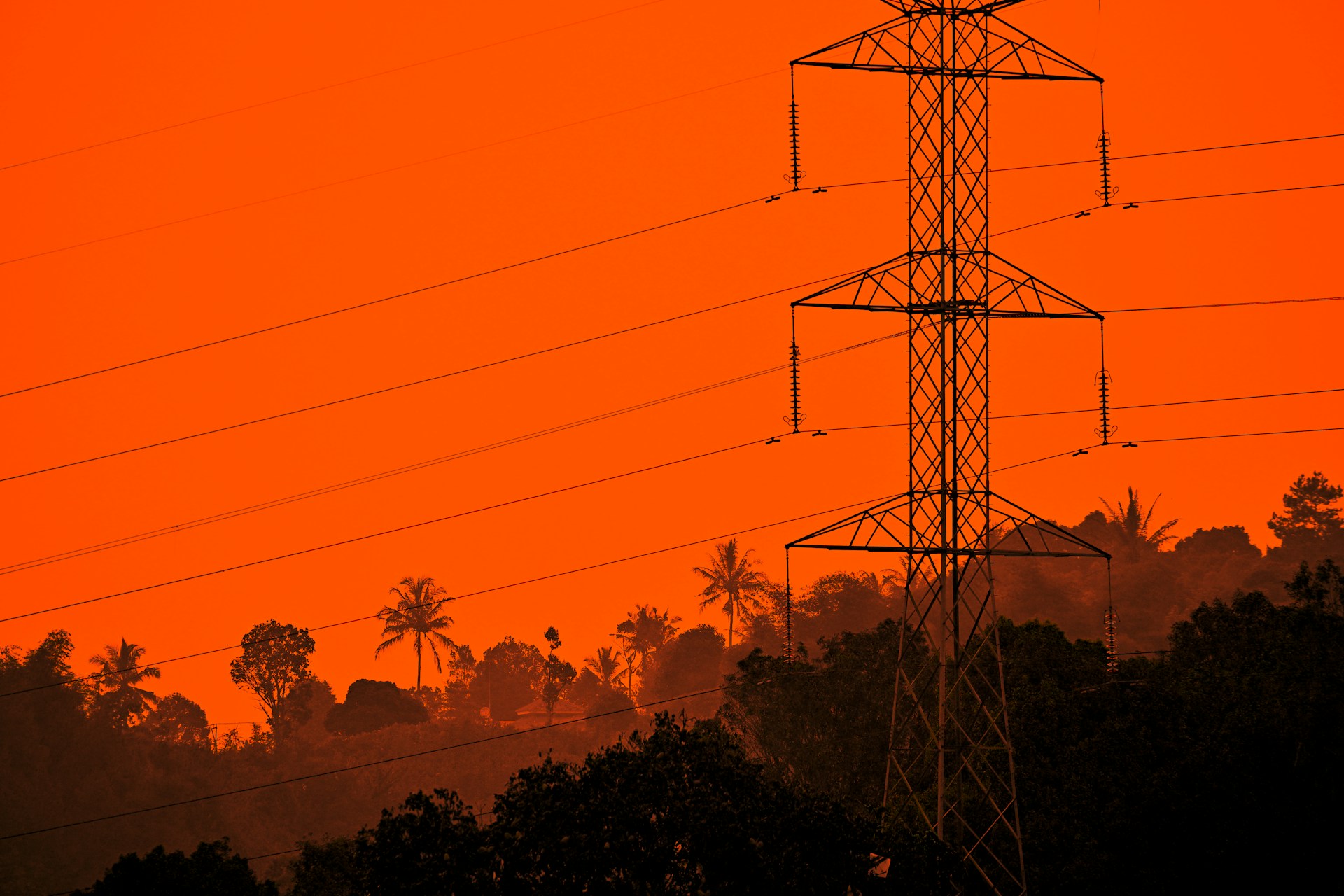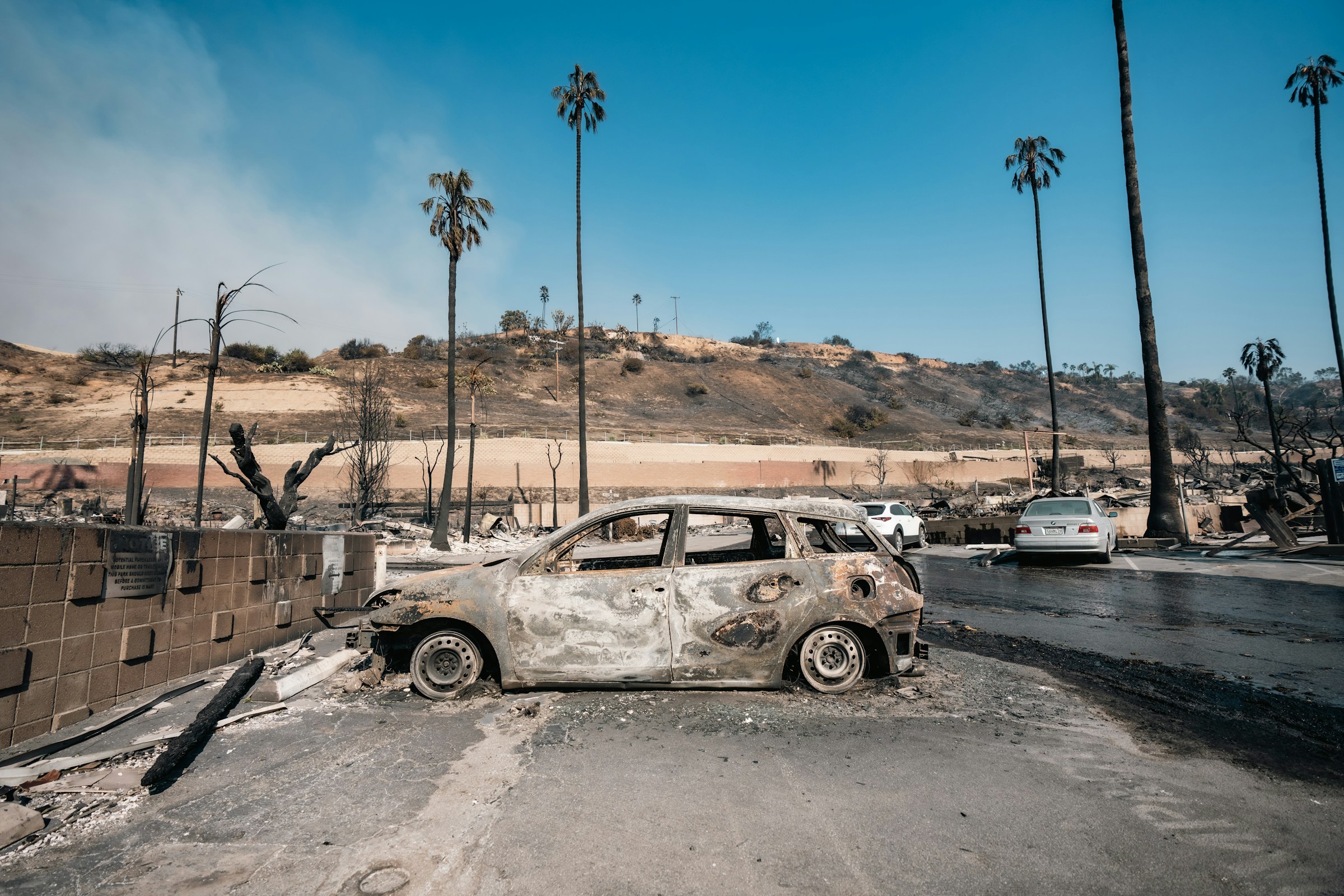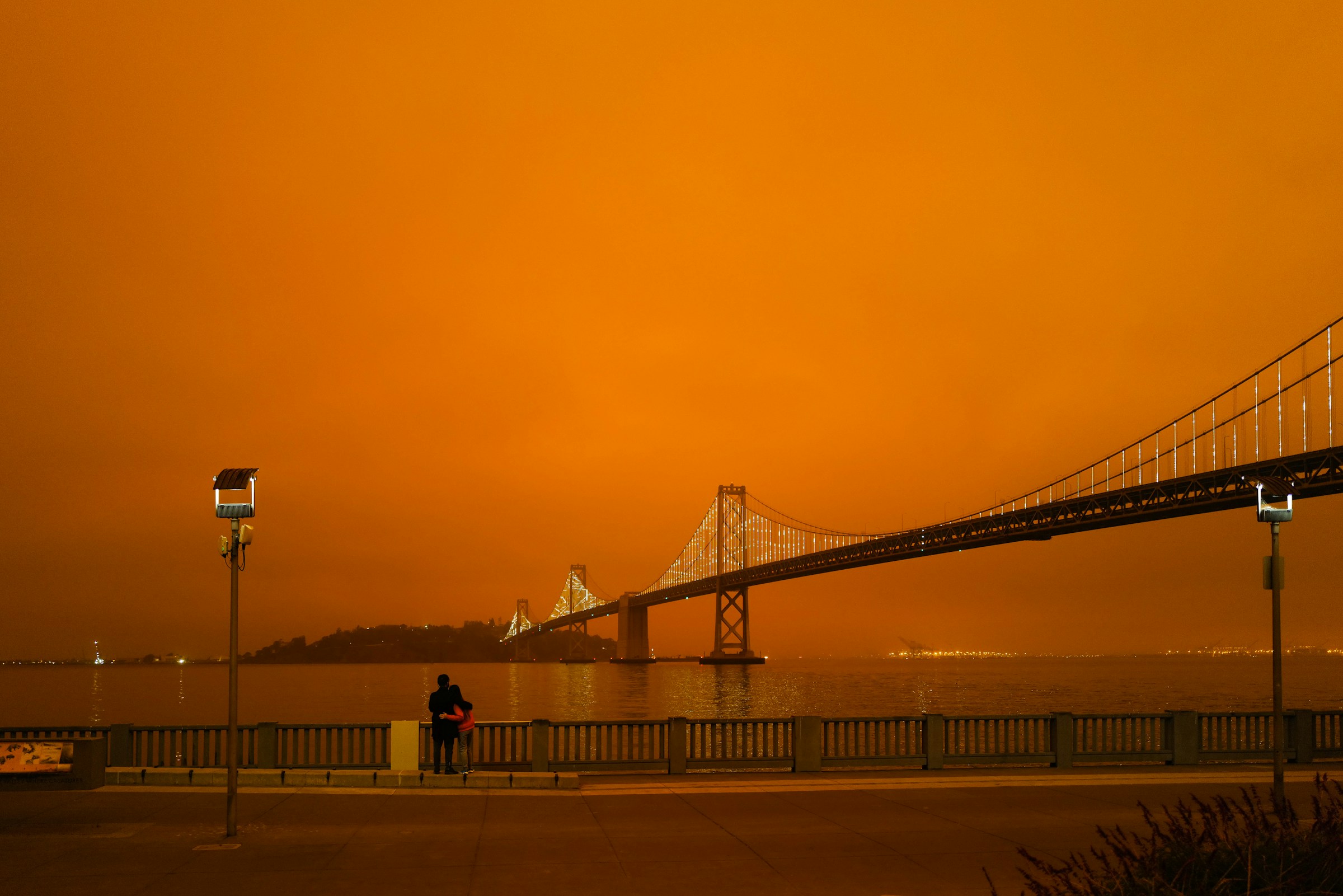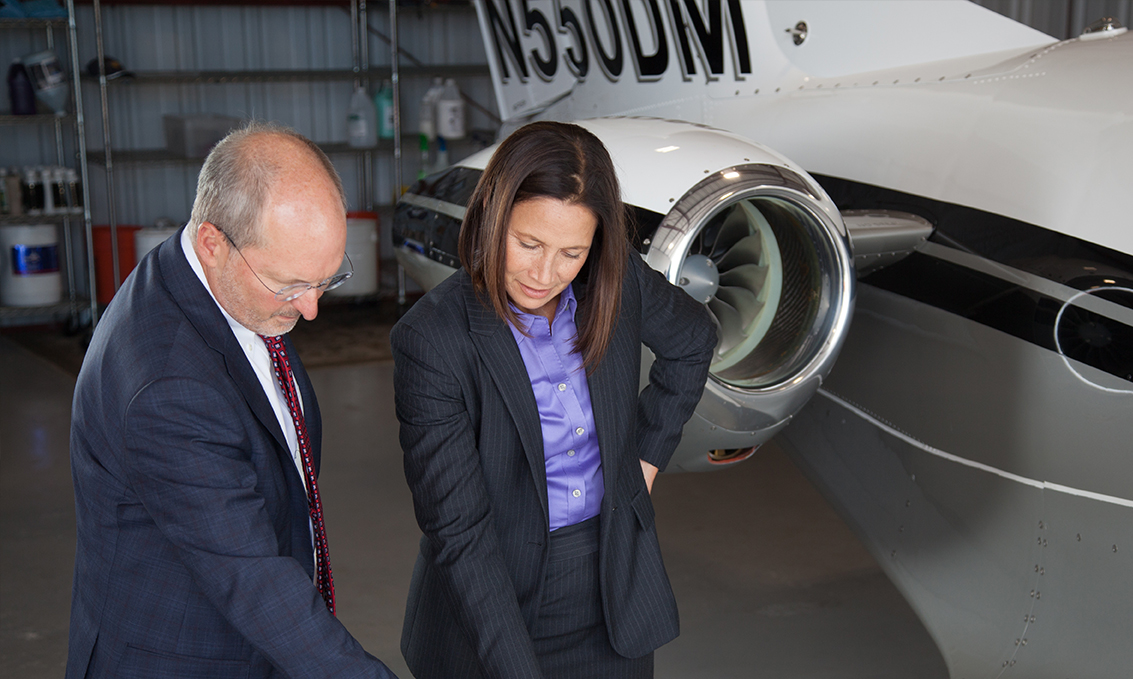
Generally speaking, wildfires tend to start in places with abundant vegetation, hot and dry conditions, and the presence of an ignition source (e.g., lightning, campfires, power lines). The wildfire can spread to nearby areas and even into residential communities.
This question has been on our minds while meeting people in L.A. and discussing Eaton Fire lawsuits against SoCal Edison. Many neighborhoods are built at the edges of wildfire-prone wildland, and some homes and businesses are even nestled into hillsides that could be endangered during a wildfire.
Below, we’ll explore where wildfires happen as well as why they happen. If you’ve been affected by a wildfire caused by a damaged power line or transmission tower, Danko Meredith is here to hold utility companies liable for negligence. To request a free consultation with our California wildfire attorneys, contact our Bay Area law firm online. You can also give us a call at (650) 453-3600.
What States Are Likely to Experience Wildfires?
Western states with forests, grasslands, and dry climates face significant wildfire risk. It should come as no surprise that California leads the nation in wildfires. Other states that face significant wildfire risk include Alaska, Oregon, Washington, Arizona, Texas, Colorado, and New Mexico.
According to 2023 data from the Insurance Information Institute, California had the most fires and the largest affected area that year.
- California: 7,364 wildfires; 332,722 acres burned
- Alaska: 346 wildfires; 314,276 acres burned
- New Mexico: 1,019 wildfires; 212,378 acres burned
- Texas: 7,102 wildfires; 210,264 acres burned
- Oregon: 1,979 wildfires; 202,035 acres burned
The Insurance Information Institute also had alarming numbers when it came to homes at risk for extreme wildfires in 2024:
- California: 1.25 million homes at risk for extreme wildfires
- Colorado: 321,294 homes at risk for extreme wildfires
- Texas: 244,617 homes at risk for extreme wildfires
- Oregon: 129,567 homes at risk for extreme wildfires
- Arizona: 124,603 homes at risk for extreme wildfires
Facts and figures like these are why our California wildfire attorneys take these cases so seriously. The sheer scale of devastation and displacement in the state should give everyone pause.
Factors That Make California Wildfires More Likely
There are a few key factors that make California more prone to major wildfires than other states.
- Heavy Rains and Droughts: Climate change has caused extreme weather in California. Heavy rainfall promotes the growth of grasslands and forests, but extended drought conditions turn hillsides and mountains into an abundant fuel source for a possible fire. A lightning strike, an out-of-control campfire, or a spark from a power line is all it takes to cause a disaster.
- Nearby Human Activity: Many Californians live and work in communities that are near forests or wildlands, which increases the risk of a human-caused wildfire. Part of this involves what’s known as the wildland-urban interface (WUI), which we’ll elaborate on in a moment.
- Strong Regional Winds: The Diablo winds in Northern California and the Santa Ana winds in Southern California are a major fire danger. These strong winds can cause power line strikes that could ignite a wildfire. In addition, these winds could carry embers in a wildfire hundreds of yards, expanding the size and devastation of a blaze.
- Remote, Rugged, and Difficult Terrain: Some parts of the state are difficult to reach on the ground, which makes it harder to contain a wildfire. Water bombers and aerial firefighting have come a long way in recent years, but it still takes ground crews to ensure any smoldering embers are fully extinguished. Smokejumpers may be sent into these areas, but they are a small crew focused on creating fire breaks to slow down the spread of the fire.

The Wildland-Urban Interface (WUI)
The wildland-urban interface refers to the transition from forest and grasslands to human buildings and developments. Essentially, this is where cities or suburbs touch the outskirts of the wild. This also refers to businesses and residences in areas that are surrounded by forest or grassland.
Countless communities throughout California fit this description, from the many hillside homes in the South Bay and along the Peninsula to the L.A. neighborhoods of the San Gabriel Valley. While this can offer a taste of tranquil, bucolic life, California’s drought conditions put these neighborhoods at particular risk during a wildfire.
When homes and businesses are near fire-prone wildland areas, there tends to be a lot of electrical infrastructure as well. Power lines and transmission towers in the WUI need to be carefully maintained and repaired, and utility companies must be vigilant about clearing trees and tree limbs around this equipment.
Where Are Wildfires Most Common Around California?
California wildfires are most common around mountains, forests, and grasslands where the climate is dry, hot, and windy. As climate change continues to worsen these kinds of conditions and the WUI expands to meet housing demand, more and more communities are at risk of major losses should a wildfire occur.
Let’s look at some regions of the state that have been most affected by wildfires in the last decade.
Wildfires in Northern California Communities
The combination of dense forests and dry summers makes Northern California particularly susceptible to wildfires. Places like Butte County, Shasta County, and Lassen County have been affected by significant wildfires in recent years. Severe wildfires have also affected Wine County communities in Sonoma and Napa counties, even spreading to Santa Rosa and endangering other North Bay neighborhoods
Notable wildfires in Northern California include:
- The Dixie Fire (2021): The Dixie Fire was caused by a fir tree leaning against a power distribution line. The massive wildfire burned more than 960,000 acres, affecting numerous communities nearby.
- The Camp Fire (2018): The Camp Fire was caused by the failure of a badly maintained transmission line. This catastrophic wildfire destroyed 15,000 homes and caused 84 fatalities, devastating the town of Paradise, CA.
- The Carr Fire (2018): The Carr Fire was started by sparks from a tire rim after a blowout ignited dry brush near the highway. The wildfire burned over 229,000 acres, killing eight people and destroying 1,604 structures.
Wildfires in the Sierra Nevada Region
The steep terrain, dense forest, and dry summers around the Sierra Nevada can lead to major wildfires that are difficult to contain. Communities around Lake Tahoe can be severely affected by a major wildfire. There is also a significant risk for WUI communities in Placer County, El Dorado County, Nevada County, and Calaveras County.
Notable wildfires in the Sierra Nevada include:
- The North Complex Fire (2020): The North Complex Fire consisted of 21 fires caused by lightning strikes. The massive wildfire burned almost 319,000 acres, destroying 2,455 structures and killing 16 people.
- The Butte Fire (2015): The Butte Fire was caused by a tree leaning against a power line. The wildfire burned 70,000 acres, killing two people and destroying hundreds of homes throughout Amador and Calaveras counties.
Wildfires Along the Central Coast and Inland Valleys
The hills, woodlands, and vistas of the Central Coast and Inland Valleys can be striking, but the drought conditions and dangers of lightning make these parts of California particularly prone to major wildfires. Communities from Monterey County all the way down to San Luis Obispo and Santa Barbara could be affected by a wildfire or forced to evacuate out of an abundance of caution.
Notable wildfires along the Central Coast include:
- The Thomas Fire (2017): The Thomas Fire was caused by high winds that caused power lines to make contact with one another and ignite dry vegetation beneath. It burned almost 282,000 acres, destroying 1,063 buildings and directly causing two deaths.
- The Soberanes Fire (2016): The Soberanes Fire was likely caused by an illegal, unattended campfire. No suspect was ever arrested. The wildfire burned over 132,000 acres, destroying 57 homes and killing one bulldozer operator.
Wildfires in Southern California
Even though there are densely populated urban areas in Southern California, we’ve seen the devastation that wildfires can have in Los Angeles County and San Diego County in recent years. The drought conditions, Santa Ana winds, and the proximity of neighborhoods to dry brush and forest make parts of Southern California particularly deadly during a wildfire.
Notable wildfires in Southern California include:
- The Los Angeles County Wildfires (2025): Multiple deadly fires burned in the greater L.A. area, most notably the Eaton Fire, which was likely caused by a malfunction at a transmission tower. The Eaton Fire killed at least 19 people and damaged or destroyed more than 9,400 structures, many of which were located in the neighborhood of Altadena.
- The Woolsey Fire (2018): The Woolsey Fire was caused by high winds that made a loose transmission line arc and set fire to dry vegetation beneath it. The wildfire burned almost 97,000 acres, destroying 1,643 structures and killing three people.
- The Witch Creek Fire (2017): The Witch Creek Fire was caused by power lines downed by heavy winds. The wildfire burned almost 198,000 acres, destroying 1,265 residential buildings and causing two deaths.

Could a Wildfire Affect Places Like Sacramento or the Bay Area?
Potentially, yes, under certain conditions. It’s something many have considered after seeing the damage of the L.A. wildfires, and it’s brought the wildland-urban interface into focus as we consider future fire seasons and what they may have in store.
Many communities in Sacramento County are close to places like Deer Creek Hills Nature Preserve. Dry conditions and winds could spread embers and flames into residential areas. In fact, CBS Sacramento 13 reported earlier this year that 90% of Sacramento area homes are in the WUI.
In the Bay Area, there’s a similar risk posed by WUI development. KPIX/CBS News reported that 1.2 million Bay Area homes are in the wildland-urban interface. This danger is particularly pronounced in Alameda County, where a third of all homes are in the WUI.
Fires Could Spread to Densely Populated Areas
When wildfires reach urban areas, the amount of property damage can be astounding.
Think of the Tubbs Fire in 2017, which affected parts of Wine Country and the North Bay. The fire eventually spread to Santa Rosa, destroying more than 2,800 homes in the city and causing $1.2 billion in damage.
Though not technically a wildfire, the Oakland Hills firestorm of 1991 showed just how bad a fire can spread through a dense population center, causing $1.5 billion in damage at the time (almost $3 billion when adjusted for inflation).
As climate change continues to worsen weather patterns and extend the dry season, people all over California need to be ready for this unfortunate possibility.
What Are the Most Common Causes of Wildfires in Different Parts of California?
At Danko Meredith, we’ve worked on wildfire litigation for many years, and we’ve identified some of the most common causes of major wildfires over the years.
Dry Thunderstorms and Lightning Strikes
Dry thunderstorms and dry lightning are a major cause of wildfires in California, especially in mountainous areas. This refers to storms in dry climates that produce a lot of thunder and lightning but no rain. These dry conditions can cause massive wildfires that can burn hundreds of thousands of acres of forest and wildland.
Examples of lightning strike fires include the 2023 Canadian wildfires and the California lightning fires of 2020 (which included the SCU Lightning Complex, the August Complex, and the LNU Lightning Complex).
Human-Related Activities
Human activities are the most common cause of wildfires nationwide. These actions could be intentional, unintentional, or the result of negligence. Some common human causes of wildfires include:
- Unattended campfires
- Fireworks
- Discarding lit cigarettes
- Car accidents
- Mechanical errors
- Arson
One relatively recent example of this is the 2022 Mill Fire in Siskiyou County. That fire in Northern California was likely caused by the failure of a water-spraying machine at Roseburg Forest Products Mill.
Utility Company Negligence
In addition to human activity, we need to highlight the role of utility companies in major California wildfires. Many of the wildfires we mentioned earlier as examples were caused by negligent actions by Pacific Gas & Electric (PG&E), Southern California Edison (SCE), and San Diego Gas & Electric (SDG&E).
The most common causes of utility wildfires include:
- The Utility Company Did Not Maintain Its Equipment: Utility companies often put off necessary maintenance because it’s more cost-effective to let equipment break rather than fix it. When this equipment fails, people’s lives and livelihoods are at stake. Our law firm calls this the “run-to-failure” mentality, and it’s unacceptable.
- The Utility Company Did Not Clear Away Vegetation from Power Lines: Trees, tree limbs, and other kinds of vegetation have to be cleared away from transmission towers and power lines to reduce the risk of starting a fire. Unfortunately, utility companies can be negligent in keeping the area around their equipment clear of fire hazards.
- The Utility Company Failed to Shut Off Power During High Winds: During strong winds and other dangerous conditions, utility companies are allowed to turn off power to avoid line strikes that can ignite fires. When a company fails to take this precautionary measure, it could mean the loss of countless homes in a nearby WUI and the devastation of entire neighborhoods.
When forest fires and wildfires are caused by companies like PG&E, SCE, or SDG&E, the team at Danko Meredith can help regular working Californians file lawsuits and seek financial recovery.

How Danko Meredith Can Help Wildfire Victims Against Utilities
Our San Francisco Bay Area wildfire lawyers have more than 120 years of combined legal experience in complex litigation. We have taken on major utilities, corporations, and even government entities for years, and we will not back down when their actions affect the lives of regular people just like you.
We Take on California Utility Companies Without Hesitation
Danko Meredith has worked on numerous utility wildfire cases in California, and we’re currently helping victims of the 2023 Lahaina Fire in Maui as well. We know the tactics that utility companies use to minimize accountability and payouts to wildfire victims. We can help you avoid their lowball settlements and fight to ensure you get the compensation you deserve.
We Will Build a Compelling Case That Tells Your Story
Danko Meredith has a success rate of over 99%. That’s thanks to our focus on our clients, our resources to see a case through to trial, and our access to leading experts throughout the country. We’ll make sure your individual case is heard, and we’ll back up your story with strong evidence that focuses on the big picture as well as minute details. Some law firms settle too early, but our firm has the means to stay in the fight if it means getting you properly compensated.
We Work on a Contingency to Minimize Your Financial Burdens
After surviving a wildfire, your focus is on rebuilding and recuperating from your experiences. The last thing you want is another bill. In addition to free case reviews, our law firm works on a contingency basis. That means you don’t pay unless we win. We take away the financial risks of getting legal representation, which helps even the playing field between working Californians and major utility companies.
Contact Denko Meredith for a Free Consultation
At Danko Meredith, we may be outnumbered by a utility company’s defense team, but we won’t be out-lawyered. We’re here to make sure you have a voice and that it’s heard.
To discuss your situation with trial-tested California wildfire attorneys, contact our Bay Area law firm today. You can also call our law office in Redwood City at (650) 453-3600. We’re ready to listen, and we’re here to fight for you.
